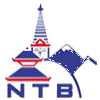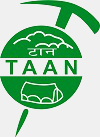Getting your trek organized
Today, trekking in Nepal is more accessible than what it used to be a couple of decades ago. This is specially so after the introduction of different social media. Information relating to trekking, trail and facilities are so abundant that quite lot travelers manages to trek independently. Popular destinations like Everest , Annapurna and Langtang route are no more remote. There are just few routes left declared as remote and restricted area or far western newly opened trekking zone where the foreigners are supposed to trek only with certified guide as organized by the agency.
But is it really so easy for everyone to self-organize trek independently? NO!!! The other side of the coin is actually not that smooth. Trekking independently means, the travelers will need to handle other formality which are often hectic. For example- they must have extra days to line up for issuing trekking permit, extra hours for pondering on guide books or different sites in mobile to acquire information. This will definitely make their holidays "a working holiday!”.
Therefore, our sincere advice is to go in organized way. There are numerous benefits of taking guides. They can be clearly listed as follow:
- Taking guides means your direct contribution in generating more jobs for Nepalese people.
- A local guide can play a role of catalyst to familiarize you with local people and culture. Nothing is greater than to feel at home away from home!
- With the help of guide, you can get your permit made without any hassle. You can relax in Hotel or take an extra tour in heritage sites while your guide finishes permit formality.
- When you are with guide, you don't have to worry about getting lost. You can fully focus on the beauty of nature, take pictures, and make paintings or keep records for your memoirs.
- You get the helping hands ready if in case you go through some adverse situation like falling sick, getting lost, or get trapped in bad weather.
- Most importantly, it is worth having a person explaining you about the place and people you are amidst.
Why trekking in Nepal?
Along the trails winding up, down, over and around (Nepalese Flat!), it takes you through serene villages brooded under the scintillating mountains. So, it is definitely an experience cherished for lifetime, both, of beholding the hypnotic beauty of nature and meticulously tackling the challenges in the treacherous yet tantalizing mountain regions. Imagine, celestial clouds forming below while the canopy of magnificent peaks of mountains are towering over you!
Most of the trails you walk on are still used predominantly by Nepalese people for everyday travel and trade. So, it is common to meet Nepalese porter carrying supply like groceries or lengths of corrugated roofing iron slung from a jute strap (namlo) around the head or a sick relatives being carried in a basket (doko) in the same manner to the nearest medical facility. Trekking means you will be involved in a way you could never be in a car, bus, train or airplane. But, you can enjoy the friendliness of the people; feel the spell of the mountains and their culture. A trekking trip can be of any length you choose. There are a number of short treks around the Kathmandu and Pokhara valleys which only take a day to complete. There are two or three day treks or treks from a week to a month. For those with enough time can combine a number of treks and spend months just walking around.
Camping Trek
Trekking through the Himalayas is for those who prefer a less cosseted vacation. On the camping trek, we get up and go to bed with the daylight, and relax in warm sunshine after a leisurely lunch. – We provide all camping and cooking equipment. These treks are staffed by a full local crew, including a main guide, porters, cook and assistants. Your main baggage is carried by porters.
In camping trek, it's our crews’ job to perform all the camp work, including leaving the sites clean. Food on trek is a mixture of Western and local dishes with plenty of choice. Our menu is based on fresh food to provide three nutritious and tasty meals a day. We can cater for specific dietary needs if we know in advance. All trekkers are pleasantly surprised at the quality of the meals.
- We use airy and comfortable tents. There is also a latrine tent. A shower tent and dining tent set up at each campsite.
- Your only job is to do the walking and take photographs, while our trek staff takes care of the camp duties and carrying.
- The benefit of a camping trek is that we are not limited to use the trails more frequently travelled and there is a greater opportunity to get ‘off-the-beaten-track’.
Trekking Gears
Hardware For all Treks Essential:
- Water Bottle 1 liter min
- Day pack
- Money belt
- Sunglasses
- Wrap around
- Bag Liners, Stuff and Rubbish Bags;
- Sewing Kit
- Toiletries. Bio-degradable;
- Tissues, plenty! The toilet paper provided isn’t suitable or easily replaced on trek
- Towel. Light weight or pack towel
- Headlamp
- Penknife, Swiss Army style
- Batteries. Long life even these have a shorter life at Altitude
- Disposable Lighter
- Personal First Aid Kit.
General : For Trekking in September, October, March, April and May
- Walking Boots : Lightweight, waterproof, with plenty of toe room, well worn in
- Socks : 3 pairs each thick/thin to be worn in combination-boots should be big enough!
- Running / Tennis shoes / Sandals : For evenings and and to relief the feet
- Waterproofs : Thigh length jacket with a hood.
- Pants :Lightweight, loose, long, trouser, short or skirt. Jeans are unsuitable.
- Jackets : Pile/Fleece,and/or SWEATER. Lightweight, Duvet Jackets are provided on request
- Trackpants : For evenings and colder days;
- T-shirts : 2 OR 3
- Shirt : Lightweight, long sleeved, with collar, to protect sensitive areas from the Sun;
- Hats : 1 wool/pile “beanie” with ear flaps. 1 peaked sun hat , “Legionnaire” style;
- Gloves :Wool /pile
- Scarf : Wool /pile
- Underwear : As required
- Swimsuit : Essential for outdoor bathing.
- Snow Gaitars : To keep pants and Boots dry












